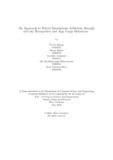| dc.contributor.advisor | Alam, Md. Golam Rabiul | |
| dc.contributor.advisor | Rahman, Rafeed | |
| dc.contributor.author | Uz Zaman, Nur | |
| dc.contributor.author | Akther, Afroza | |
| dc.contributor.author | Tabassum, Nowshin | |
| dc.contributor.author | Samrat, Md. Khaliduzzaman Khan | |
| dc.contributor.author | Khan, Swad Mustasin | |
| dc.date.accessioned | 2023-12-06T06:29:45Z | |
| dc.date.available | 2023-12-06T06:29:45Z | |
| dc.date.copyright | 2023 | |
| dc.date.issued | 2023-05 | |
| dc.identifier.other | ID 19301052 | |
| dc.identifier.other | ID 19301076 | |
| dc.identifier.other | ID 19301251 | |
| dc.identifier.other | ID 19301114 | |
| dc.identifier.other | ID 19101599 | |
| dc.identifier.uri | http://hdl.handle.net/10361/21930 | |
| dc.description | This thesis is submitted in partial fulfillment of the requirements for the degree of Bachelor of Science in Computer Science, 2023. | en_US |
| dc.description | Cataloged from PDF version of thesis. | |
| dc.description | Includes bibliographical references (pages 51-54). | |
| dc.description.abstract | The widespread use of smartphones has raised concerns about problematic smartphone use or addiction, which has become a significant issue in today’s society. Despite the recognition of this research area, detecting smartphone addiction remains
a challenge. Therefore, it is crucial to identify the primary causes of smartphone
addiction and understand how individuals’ lifestyles contribute to this behavior.
Most of the methods in research area are self assessment based and detected via
different addiction scales. Moreover, in previous studies daily human activities was
never considered as a factor in problematic smartphone use. This study aims to
explore a new approach in detecting excessive smartphone usage by considering the
impact of sensor based daily activities and smartphone app usage. By examining
addictive characteristics of smartphone usage and clustering them based on various
independent variables, we sought to determine smartphone addiction and investigate
the influence of daily activities. To collect reliable and accurate data, we utilized
apps for seven days to capture information on the participants’ smartphone usage.
Leveraging sensor data and LSTM models, we identified participants’ activities and
correlated them with daily app usage duration to detect smartphone addiction using clustering methods such as K-Means and K-Medoids. Our analysis revealed that
around 28% participants showed addicted behaviour. To validate these findings, we
compared our result with survey results using diverse evaluation metrics (RI,FMI),
which exhibited 87% accuracy. | en_US |
| dc.description.statementofresponsibility | Nur Uz Zaman | |
| dc.description.statementofresponsibility | Afroza Akther | |
| dc.description.statementofresponsibility | Nowshin Tabassum | |
| dc.description.statementofresponsibility | Md. Khaliduzzaman Khan Samrat | |
| dc.description.statementofresponsibility | Swad Mustasin Khan | |
| dc.format.extent | 54 pages | |
| dc.language.iso | en | en_US |
| dc.publisher | Brac University | en_US |
| dc.rights | Brac University theses are protected by copyright. They may be viewed from this source for any purpose, but reproduction or distribution in any format is prohibited without written permission. | |
| dc.subject | Smartphone | en_US |
| dc.subject | Addiction | en_US |
| dc.subject | App | en_US |
| dc.subject | Usage | en_US |
| dc.subject | Activity | en_US |
| dc.subject | Sensor | en_US |
| dc.subject | Cluster | en_US |
| dc.subject.lcsh | Mobile computing | |
| dc.subject.lcsh | Human activity recognition | |
| dc.subject.lcsh | Location-based services | |
| dc.title | An approach to detect smartphone addiction through activity recognition and app usage behaviour | en_US |
| dc.type | Thesis | en_US |
| dc.contributor.department | Department of Computer Science and Engineering, Brac University | |
| dc.description.degree | B.Sc. in Computer Science and Engineering | |

